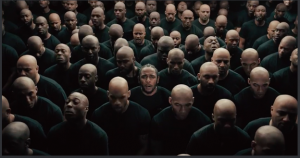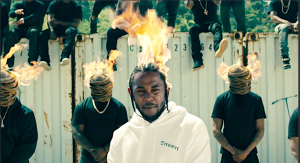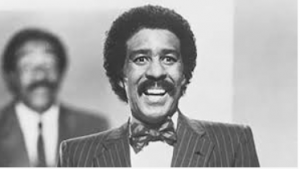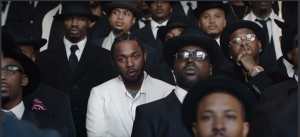Topic: Kendrick Lamar_HUMBLE
The artist Kendrick Lamar (born June 17, 1987) is an American rapper, songwriter, and record producer. He is regarded as one of the most skillful and successful hip-hop artists of his generation. Raised in Compton, California, Lamar embarked on his musical career as a teenager under the stage name K-Dot, releasing a mixtape that garnered local attention and led to his signing with indie record label Top Dawg Entertainment (TDE). He began to gain recognition in 2010, after his first retail release, Overly Dedicated.
One of his music videos is particularly interesting to me as it includes many captivating scenes and words. That particular video was released in 2017 and got a lot of attention. In addition to being a very well-sounding song, it also includes messages depicted with scenes. Through this song, the singer addresses Americans, but more precisely Black people, women, corrupt people and more directly to those taking part in that racial segregation and or profiling. The purpose of this song was to highlight what black people are still going through and how it affects the way they live and the way they act. The content was expressed in a lyrical and explicit way to the audience and the original oeuvre may be somewhat inappropriate for underaged people.
From the music video, it is clear that the artist put a lot of work to make things look exactly the way he wanted it to look. Scenes throughout the video have meanings and are meant to send messages to the audience. In the introduction, we can see Kendrick standing still dressed like a pope portraying “HUMBLE” manners till he starts singing with somewhat a though character. This scene represents the “awakening”, stating that none can consider one ethnicity to be superior to another, and still expect the oppressed people to stay nice. As a side note to that scene, oppression is not “Christian”. Suddenly, from a pope driving the word of God, Kendrick turned into a different personality where many girls are sitting next to him counting money. This scene represents how media takes advantage of the hard work of others. The women counting his money also have masks on their faces which means that they are undercover. Next, a scene shows him in the middle of a dinner table covered in red with wine and bread on it, and other people sitting along. This scene depicts the famous diner Jesus had before being crucified. This scene has been interpreted in many music videos by other artists such as A$AP Ferg, Nas, and Stormzi. That scene more particularly shows that the people you just broke bread with, can betray you.
Another scene shows Kendrick in front of a group of men with their heads on fire and other streets guys in the background. He then mentioned “Dreamers”, to illustrate how racist people think, their selfish manners when they feel like someone is taking over. Their heads are on fire due to their dreams that they can’t reach and are forced to live like the guys in the far background. On another scene with a little bit of controversy, he says that he is “tired of Photoshop” and that he needs something natural then displays a girl in two screens (natural and “photoshopped”), where the girl seems to look even better natural! That scene causes a bit of controversy from the feminists. Some seemed offended for being portrayed as “photoshopped” because they use makeup. But on the other hand, some people say that he just stated his preference and that nobody should feel concerned. The meaning of the scene was tricky as he mentioned Richard Pryor who was an American stand-up comedian, and actor. He reached a broad audience with his trenchant observations and storytelling style and is widely regarded as one of the greatest and most influential stand-up comedians of all time.
Pryor won an Emmy Award (1973) and five Grammy Awards (1974, 1975, 1976, 1981, and 1982). In 1974, he also won two American Academy of Humor awards and the Writers Guild of America Award.
Pryor’s body of work includes the concert movies and recordings: Richard Pryor: Live & Smokin’ (1971), That Nigger’s Crazy (1974), …Is It Something I Said? (1975), Bicentennial Nigger (1976), Richard Pryor: Live in Concert (1979), Richard Pryor: Live on the Sunset Strip (1982), and Richard Pryor: Here and Now (1983). As an actor, He collaborated on many projects with actor Gene Wilder. Another frequent collaborator was actor/comedian/writer Paul Mooney.
He starred mainly in comedies such as Silver Streak (1976), but occasionally in dramas, such as Paul Schrader’s Blue Collar (1978), or action films, such as Superman III (1983).
In addition, the first-ever Kennedy Center Mark Twain Prize for American Humor was presented to him in 1998. He was listed at number one on Comedy Central’s list of all-time greatest stand-up comedians.[1] In 2017, Rolling Stone ranked him first on its list of the 50 best stand-up comics of all time. He also actively fought against racism and the fact that some people change their appearance just to fit into society.
A well-known scene forms an old commercial was also illustrated, where he exchanges a jar from the back of a car to another man inside another car. The original commercial scene was made by two white men and he shows that the same scene among black Americans can be interpreted as a criminal activity.
The same action is judged different when done by someone of adifferent race. Next, he then appears in a house with gun lasers pointing at him. That scene shows media attack towards African-Americans and says it’s even worse than alcohol abuse. By “Be humble! Sit down”, Kendrick illustrate what African- American have been told. He then appears in the middle of bold head black men face down (oppressed), saying “be humble, sit down”, with him in the middle signifies that he is the voice with his face facing up no matter what he is being told. The following scene shows him between a group of black people in high status with their faces up and him wearing white to tell the difference and show that he will keep the battle going.
This music video is very entertaining, but the main idea behind this video was mostly about showing the audience facts about what is going on, that racist people are brainwashing the masses so they can think negative about African American. Considering the actual situation, such oppression does not help at all, it makes some people stop caring and just do what they are mostly considered to be doing, bad things. It was an overall very interesting song with many messages that the audience needs to understand even though some of the content were a source of questioning and controversy.
- Link to discussed video: https://youtu.be/tvTRZJ-4EyI
- Other sources of research https://youtu.be/yzoenMAFHns
- https://youtu.be/G6zWJFCTmZM
- https://youtu.be/Ne4YRL2Gpk4









